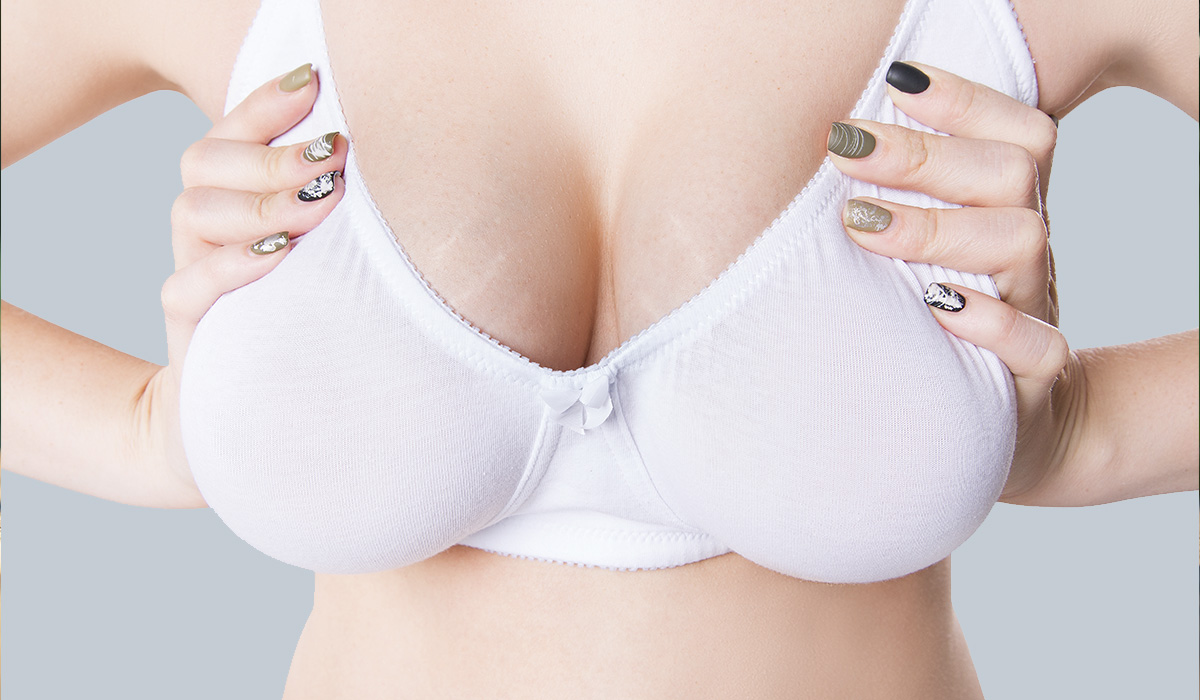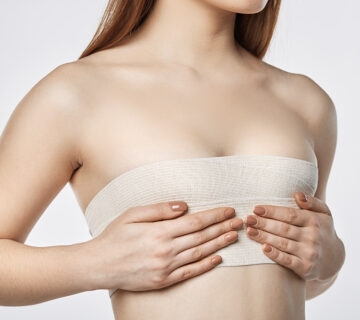While some women long for bigger breasts, those with overly large breasts may inform them it’s not always a blessing. Abnormally large breasts, also known as macromastia, have been linked to several physical health issues ranging from pain to migraines.
Popular blogger Monica Froese documented her lifelong struggle with larger breasts in a Healthline article titled “5 Reasons Having Big Boobs Isn’t Everything It’s Cracked Up to Be.” She explained she often had a tough time finding a bra that fit right and her breasts got in the way of playing sports.
Buglino Plastic & Reconstructive Surgery delves into the medical issues that can arise from overly large breasts, and how to treat them.
Neck, Shoulder & Back Pain
Larger breasts have a tendency to pull the shoulders down and hunch the back, leading to poor posture, and ultimately, persistent pain in the neck, shoulder, and back. A study published in The Open Orthopaedics Journal examined more than 300 women and concluded: “Breast-related shoulder-neck pain is thought to result from changes in the centre of gravity, and large or heavy breasts may lead to continuous tension on the middle and lower fibers of the trapezius muscle and on associated muscle groups.”
This is amplified by the fact that women with bigger breasts are often wearing the wrong size bra. A 2013 study of postmenopausal women states, “Increasing breast size and how a bra is worn may have biomechanical implications for the loaded thoracic spine and surrounding musculature.” Larger breasts and increased BMI were concluded to be associated with thoracic pain.
Shoulder Grooves
If your breasts are extremely large, your bra may not fully support them—even if you’ve been fitted with the correct size. This can cause your straps to leave deep indentations in your shoulders. They may not disappear once you take your bra off. Purchasing a wide-strap bra can help, but may not eliminate the grooves entirely.
Rashes
Bigger breasts create the perfect environment for rashes to form beneath them. Your breasts will rub against the skin on your abdomen, causing friction, moisture and heat. A sweat rash known as intertrigo, an infection caused by a yeast condition, will form. It will appear in the skin fold as red or reddish-brown, raw and itchy, cracked, and sore.
Numbness
When bras don’t fit properly, your breasts can become numb. This is a result of the compression of small nerve fibers in the breast tissue or chest wall. Large breasts can also lead to numbness in the hands and fingers if they pull the torso and affect the neck position. This poor posture can lead to compressed nerve pathways down your arms.
Inability to Exercise & Shortness of Breath
The aforementioned woman who documented her problems with her breasts also cited inabilities and concerns about exercising. She felt her breasts bounced too much while working out, so she was embarrassed to go to the gym. Larger breasts also cause shortness of breath, which can be a contributing factor to quitting training. The weight of the excess tissue can constrict the natural movement of the diaphragm. A study published in the journal Plastic and Reconstructive Surgery, shared by the National Library of Medicine, found participants were able to breathe easier following breast reduction surgery.
Headaches
Women often cite headaches as a symptom of having extremely large breasts. One study found that patients with macromastia who experienced chronic headaches or migraines can find relief after a breast reduction. Journalist Beth Ford Roth detailed her journey with DD breasts that triggered “blindingly painful headaches” in an article titled “I Got Breast Reduction Surgery For My Migraines,” for online women’s magazine Bustle. Once she underwent a breast reduction, she felt “free.”
How do you resolve these problems?
Although you can manage many of these issues with heat packs, massages, or physical therapy, they aren’t long-term solutions. However, all six symptoms can vanish with a breast reduction. The surgery removes some of the tissue and skin from the breasts to reduce their size. It can also reshape the breast and make the areola smaller. The procedure improves posture, takes the pressure off the shoulders and spine, and diminishes chronic pain and headaches. A 10-year retrospective analysis surveyed more than 150 women who had reductions, finding 95 percent of them were satisfied.
If you’re experiencing any of these symptoms or want to reduce your breast size for aesthetic reasons, visit Dr. Anthony Buglino at his Woodbury, NY office. During your first consultation, he’ll evaluate your needs and discuss your options and goals. Schedule a free consultation, today.




